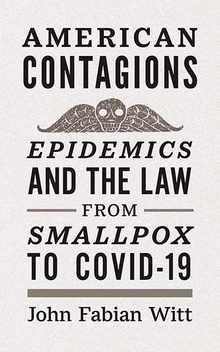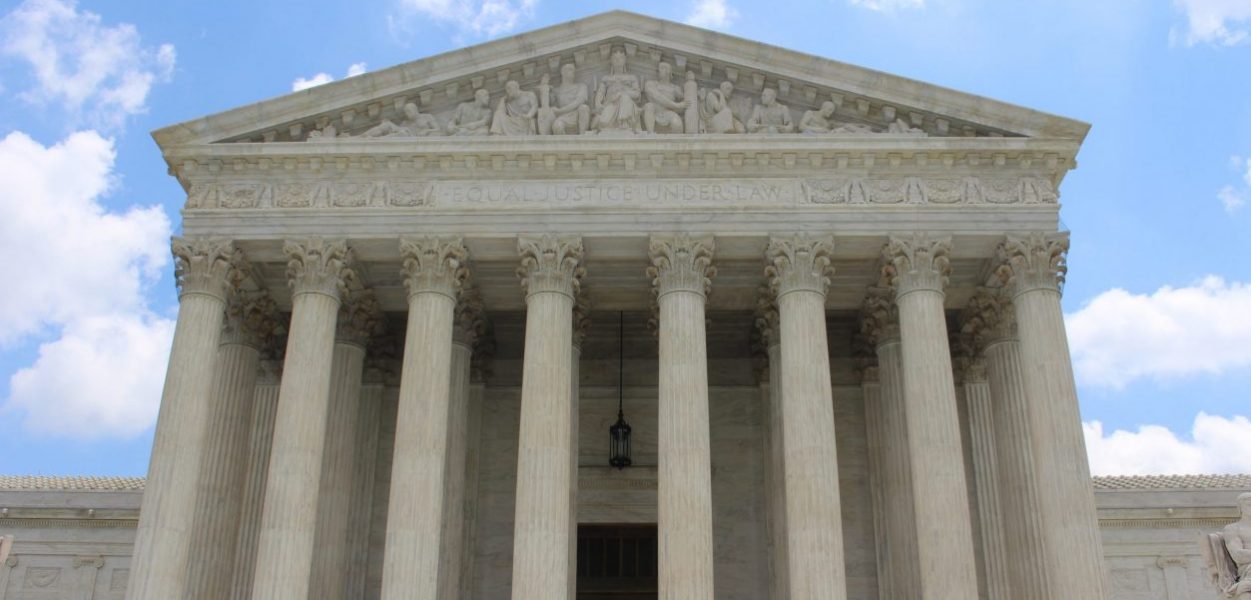Civil Liberties in a Pandemic?
John Fabian Witt—
While the courts took a middle path, public discourse around contagion remained subject to confusion and hysteria. Sometimes epidemics produced panicked overreach by the state, as in the case of the plague in San Francisco, but at other times stubborn resistance to authority rested on claims of individual liberty that have long characterized the history of epidemics in America.
Nowhere was this more evident than in the resistance to mandatory vaccination laws. In 1796, Edward Jenner in England discovered that pus in the blisters that milkmaids developed when infected with cowpox could be used to inoculate people against smallpox. Jenner’s discovery soon made its way to the United States. Massachusetts became the first state to pass a law mandating smallpox vaccination, and resistance to the spread of mandatory vaccinations arose almost immediately. In 1879 William Tebb formed the Anti-Vaccination Society of America. Local organizations modeling themselves on the society soon popped up in Philadelphia, Boston, and elsewhere. Powerful opposition to vaccination arose in Milwaukee in the last quarter of the nineteenth century, culminating in anti-vaccine riots during a smallpox outbreak in the 1890s. An 1894 ordinance in the city barred health authorities from isolating infectious smallpox victims without their consent. In the 1910s, anti-vaccination activists formed a powerful movement in Oregon, putting the issue up to a referendum in the state and winning a majority of the vote in Portland, though losing statewide. Resistance to vaccination produced occasional libertarian victories. Utah prohibited public school officials from mandating vaccination as a condition of entrance to school in 1901. Minnesota passed a similar law in 1903. California allowed those opposed to vaccination to send their children to school unvaccinated in 1911. Mostly, however, objections found less formal outlets. By the early twentieth century nearly half of all states mandated vaccination for smallpox, but the penalties for noncompliance were few. (Recall that Henning Jacobson in Massachusetts was fined $5, but never compulsorily vaccinated.) Parents of school-age children willing and able to satisfy compulsory education laws through private schools or home schooling could evade the requirements entirely.
The anti-vaccination movement of the nineteenth and early twentieth centuries exhibited a curious demographic mix. Older white Anglo-Saxon Protestants from rural areas resisted vaccinations because they seemed to interfere with the autonomy of traditional ways of life. Such people, living in sparsely inhabited regions, often had less reason to worry about infection anyway, which may have affected their calculations about the very modest risks posed by vaccines. Poor, urban, and immigrant communities often resisted vaccinations, too. Many residents in Polish and German immigrant communities, for example, had watched as public health officials wielding scientific expertise disrupted their urban working-class neighborhoods. The urban poor understood all too well that health officials sometimes rode roughshod over their interests.
Communities of free Blacks frequently shared some of the same suspicions. African Americans in Baltimore collectively resisted smallpox vaccination during an outbreak in 1827. Frederick Douglass voiced skepticism about vaccination: “Count me on the side of liberty,” he wrote to one anti-vaccination doctor. A century later Malcolm Little (later known as Malcolm X) joined the ranks of Black Americans who refused to submit to vaccinations.
The poor and people of color did not limit their suspicions to vaccines. Many mid-century sanitationists believed that poverty and bad hygiene were signs of moral vice and that those who lived in dangerous slum conditions were responsible for their own predicaments. New York’s mid-nineteenth-century Democratic Party machine took advantage of the resulting resentments. Rallying its white ethnic immigrant base, it regularly asserted that sanitarians were biased against the poor. One Catholic newspaper with a working-class readership lampooned the board of health as the city’s “In-Sanitary commission.” No wonder, then, that many resisted the machinery of the public health state.
Populist resentment of public health measures resurfaced in 1918 and 1919 during the flu pandemic. Authorities in San Francisco responded quickly to word of the fast-spreading illness. In October, just a few weeks after the first cases had been reported, Dr. William Hassler, the chief of the city’s board of health, persuaded the city supervisors to enact an ordinance requiring the wearing of masks in public places and in any place where two or more persons congregated. At first, the mask ordinance seemed to work. The San Francisco Red Cross distributed hundreds of thousands of gauze masks with strings attached to tie around the head to the city’s half million residents. Use of the distinctive face coverings was widespread, and flu cases dropped dramatically. Yet as time passed, the epidemic slowed, and compliance faded. Police arrested hundreds of maskless individuals and dragged them in front of judges, who handed out fines and even a few short jail terms. Many objected that the mask order was an unconstitutional violation of their personal liberty. The city supervisors let the order lapse in mid-November, but put it back in place when cases spiked. Once again the order seemed to be successful. Yet skepticism about the efficacy of the masks, combined with the general inconvenience of the things, led to substantially less compliance with the second masking mandate than the first. Heavy-handed enforcement ensued. Protesters responded by forming an “Anti-Mask League,” insisting on their constitutional right to move about as they pleased. Their claims fell within a well-established popular tradition of asserting personal freedoms over public health imperatives. Disobedience to mask laws seems not to have affected the spread of the virus too extensively. Masking rules may even have made matters worse by de-emphasizing other measures, such as social distancing, closures, and case isolation. In the end, San Francisco’s death toll from the flu was not substantially different from that of other cities with less aggressive masking requirements.
From American Contagions by John Fabian Witt. Published by Yale University Press in 2020. Reproduced with permission.
John Fabian Witt is the Duffy Class of 1960 Professor of Law and History at Yale, where he serves as Head of Davenport College. He is author of the Bancroft Prize–winning Lincoln’s Code: The Laws of War in American History.
Further Reading:



























